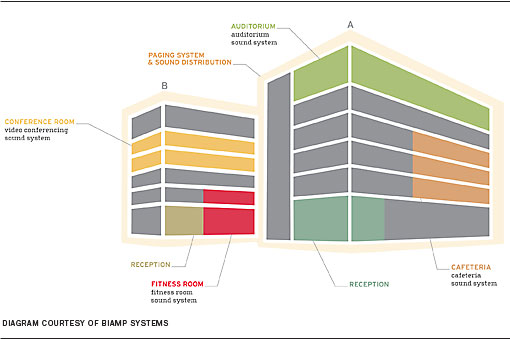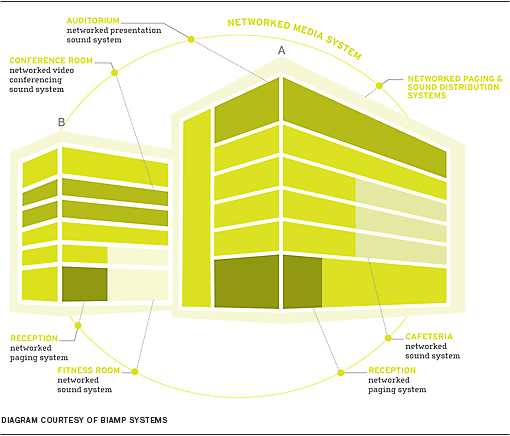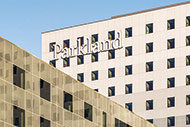 Paging systems for hospitals are essential and work on many levels to ensure critical and safe operations. Yet analog paging systems have historically been difficult to maintain and challenging to upgrade when new standards are introduced and new technology is available.
Paging systems for hospitals are essential and work on many levels to ensure critical and safe operations. Yet analog paging systems have historically been difficult to maintain and challenging to upgrade when new standards are introduced and new technology is available.
Enter network-based paging systems that provide health care IT and facilities teams comprehensive system control. These network-based systems overcome the maintenance, lack of reliability and inefficiencies associated with older paging systems, making communication easier, more flexible and more accessible. Beyond these benefits, advances in paging system technology map back to several industry trends that shape hospitals' bottom lines and priorities, making network-based paging system a critical aspect of hospital operations.
Technology trends
As more hospitals and health care campuses look to technology to aid in business objectives and to help solve problems, there are several trends affecting hospitals' priorities that are related to facilities technology and communications.
First, there has been an increased focus on health information technology since the introduction of the Health Information Technology for Economic and Clinical Health (HITECH) Act introduced in 2009. The act incentivizes the decision to adopt health IT solutions and increase the number of tech-savvy health care professionals within organizations.
Second, due to the increasingly competitive health care market, hospitals must differentiate themselves. Hospitals have begun offering concierge-styled services which focus on patient access to specialists and services, as well as developing an overall healing environment, which translates into managing sound better within patient areas. This two-pronged approach pays off by improving the patient experience and differentiating the hospital.
Third, new safety standards are being developed that will affect the health care industry in the near future. Although these standards and regulations have not yet been clearly defined across the board, there will be a greater push toward intelligibility for in-building fire emergency voice/alarm communications with other communication systems such as mass notification systems, public address systems and paging systems.
 |
| A diagram of a traditional paging system. |
This combination of trends will push hospitals to adopt innovative technology that benefits patients and business alike. Networked-based paging is one such technology advancement that benefits hospital operations and contributes to the bottom-line in the following five ways:
1. Smoother operations. If a paging system is a smart networked solution, it monitors itself for system health and provides feedback via email to system administrators, preventing issues from escalating into problems and affecting staff or worse, patients. Along with networked, decentralized processing and remote access, self-monitoring systems save hospitals time and money because the solution is easier to maintain and eliminates single points of system failures from affecting the entire paging system. Unlike analog paging systems, networked systems increase reliability. This ties into all three trends influencing health care's bottom line. Networked paging technology solves communication limitations, prevents single point of system failures and aligns with the new safety standards that are being developed.
2. Peace and quiet. Patients often complain about noise, which makes sense since according to a 2005 study from John Hopkins University the average daytime noise level in hospitals has doubled since 1960. In an effort to be more patient and healing centered, hospitals realize decreasing noise levels is important to the patient experience and overall well-being. Likewise, high noise levels are tough on staff and increase stress. Unlike analog paging systems, network-based systems can reduce noise levels through the management of sound. These systems create paging zones, which means pages are only heard where they are needed, reducing unnecessary sound levels. Some systems also include a feature called ambient noise compensation, which detects the ambient or background noise in an area and adjusts the page volume accordingly. The results are that patients and staff aren't blasted with high page volumes and their overall experience at the hospital is improved.
3. Safety and security. Hospitals, perhaps more than any other organization, have a responsibility to guarantee the safety and security of those within its facilities. In the event of an emergency, hospital administrators must have reliable systems and the means to communicate with large numbers of people across several buildings. Both the Fire Protection Research Foundation and the National Fire Protection Association (NFPA) recommend voice commands through a public address system, like a paging system. By integrating a networked paging system with an emergency system, hospitals significantly improve overall safety by ensuring clear voice instructions accompany various alarm notifications. In this case, network-based paging systems ensure patient and staff safety; while already meeting soon-to-be adopted regulations for health care emergency systems.
4. Intelligibility. Current standards demand that voice alarm systems be intelligible, which the NFPA defines as "capability of being understood or comprehended (distinguishable and understandable)." These standards ensure messages communicated through a hospital's emergency notification system can be understood by everyone and result in patient and staff safety. Network-based paging systems with digital signal processing (DSP) provide superior audio quality and intelligibility. DSP can also improve intelligibility by responding to ambient noise variations by adjusting page volume in real time. For hospital operations, network-based paging systems increase safety through intelligibility, while supporting the administrator's goals to create a more comfortable, healing environment.
5. Expandability. When hospital administrators decide to invest in infrastructure, it is essential to assess how easy and cost-effective upgrades and expansions will be. Network-based paging systems are flexible and scalable, but are also designed to enhance, expand or replace traditional analog systems. Additionally, networked paging systems are typically easier to upgrade in order to comply with new regulations and safety standards, which ties back to the third trend around evolving healthcare safety standards.
 |
| A diagram of a networked paging system. |
Supporting operational goals
Like every purchase decision, a new paging system or upgrades for a current system needs justification such as a strong return on investment. Hospital administrators should consider how paging systems support operational goals and health care trends, along with the total cost of a critical paging system long-term over the life of the investment. Network-based paging systems can address current issues with analog system maintenance, noise, audio intelligibility, future facility expansion and new healthcare regulations, which all factor into the business bottom line either directly or indirectly.
Ron Camden is the vice president of North American sales for Biamp Systems. He can be reached at camdenr@biamp.com.





